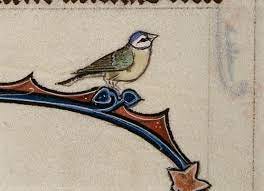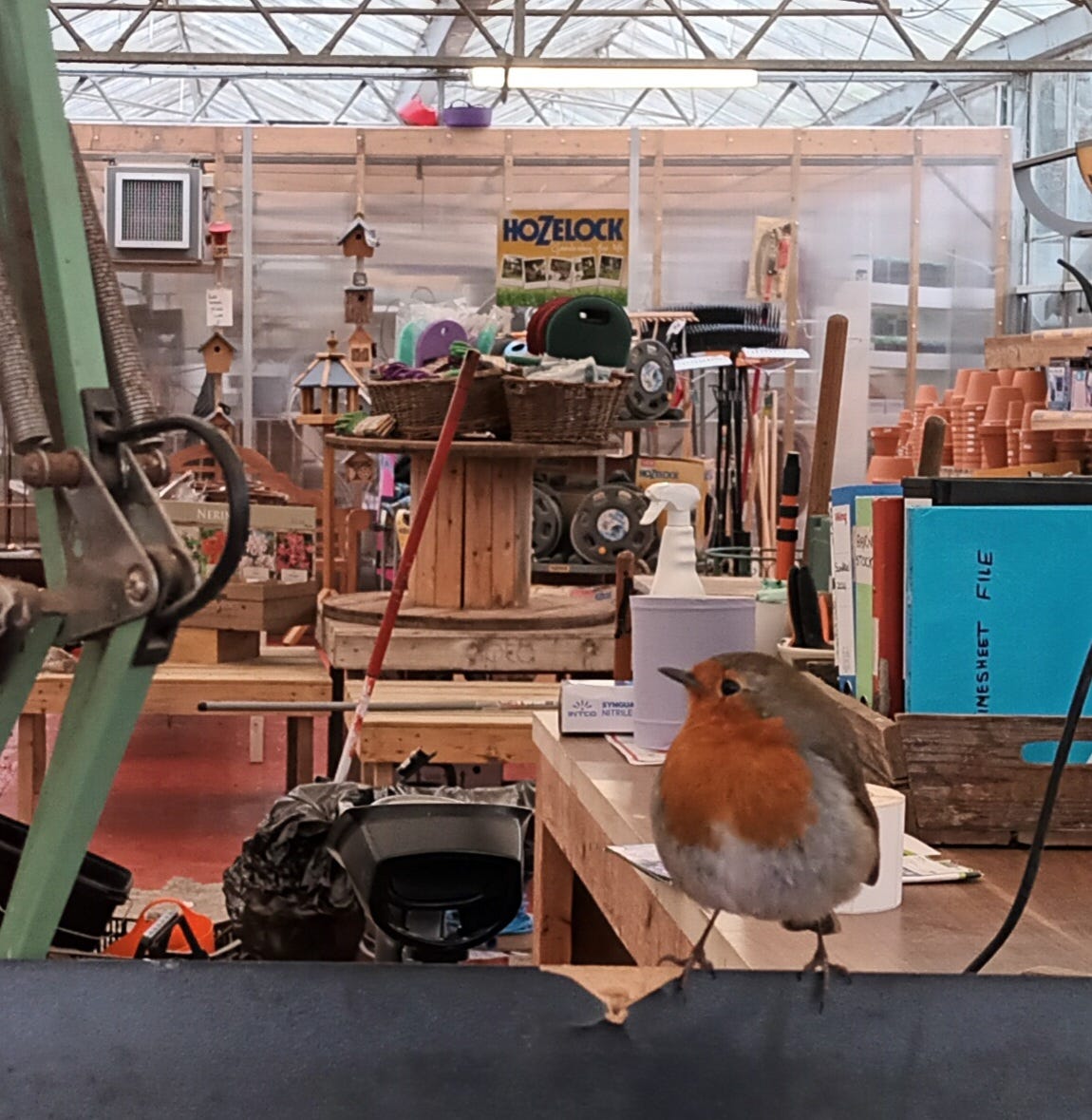A Wren's Valentine: Shrubs and Trees for Nesting Birds
Today is (apparently), ‘Saint Valentine’s Day, when every bird comes to choose his mate’. That’s Chaucer in The Parliament of Fowls, and for my money it’s a much more charming image of February 14th than chocolates and out-of-season roses. All over the nursery, the truth of the poem is born out, with birds everywhere scoping out nest sites and twittering about trying to get as fat as possible before the hard work of nesting and rearing chicks begins. In the shop, territorial robins have been scuffling for dominance over the all-important territory near the food bins since before Christmas. For weeks, you’d risk stepping on a rolling ball of furious feathery combat as they chased each other across the floor. But now one particular cock robin seems to have won out, and sits belligerently on the ledge behind the till, glowering robin expletives to any would-be challengers.
This super-romantic combat made me think about the shrubs and trees I’d want to have in a garden to encourage nesting birds. Our row of shrub ilex prove that hollies are great for nesting birds (at least one brood was raised here last summer, even though the nest is at human shoulder height and mere inches from the pathway where customers walk back and forth. The spiky branches and tasty berries of pyracantha would be popular too. We stock this shrub both in its natural form, and trained onto frames, where it can be used as quick cover for an ugly wall or fence - and where it provides perfect little nooks for small birds to tuck their nests into, in the angle between plant and wall. Sambucus - elder - is equally attractive; the decorative dark-leafed version, S. nigra ‘Black Lace,’ played host to a nesting blackbird one of our polytunnels last year.

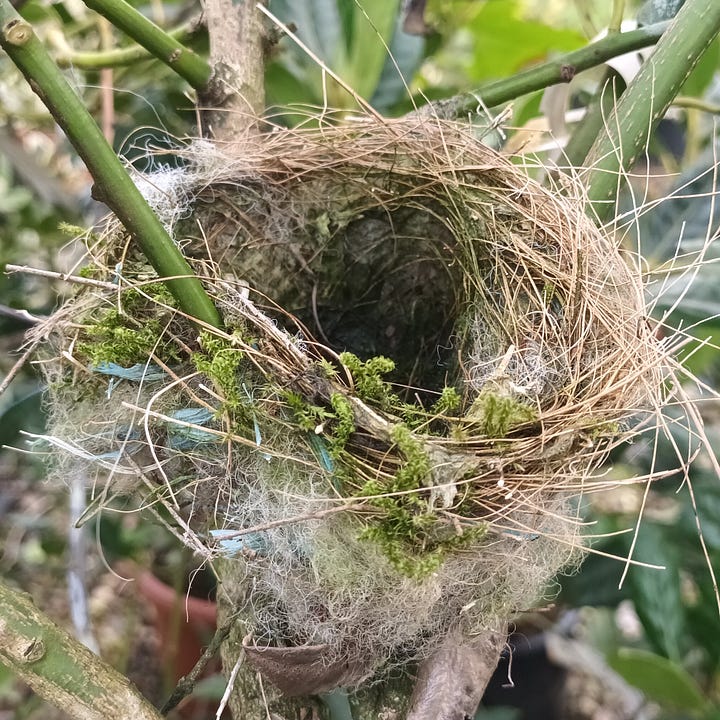
Other good bird-friendly options in the garden are dense or prickly climbers, especially if they can also provide sources of food. Amongst the rambling roses, I’m keen on Rosa ‘Bobbie James,’ which has creamy white flowers that attract insects in summer, and beautiful sprays of orange hips in winter. It also has attractive, dark-red new stems. Climbing honeysuckle is also a good bet. Lonicera x heckrottii ‘American Beauty’ has wonderful, large, rhubarb-and-custard flowers in pink and cream, and dark red berries in late summer, while L. x tellanniana is saffron yellow, with dark green leaves. In one of our polytunnels, a wren has made a tiny nest in a dense tangle of honeysuckle, with moss ‘borrowed’ from hanging baskets.
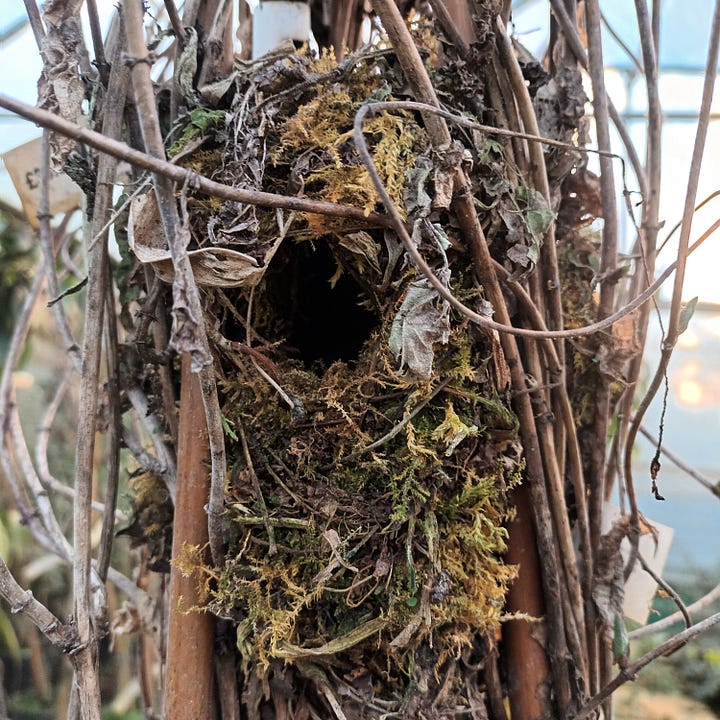
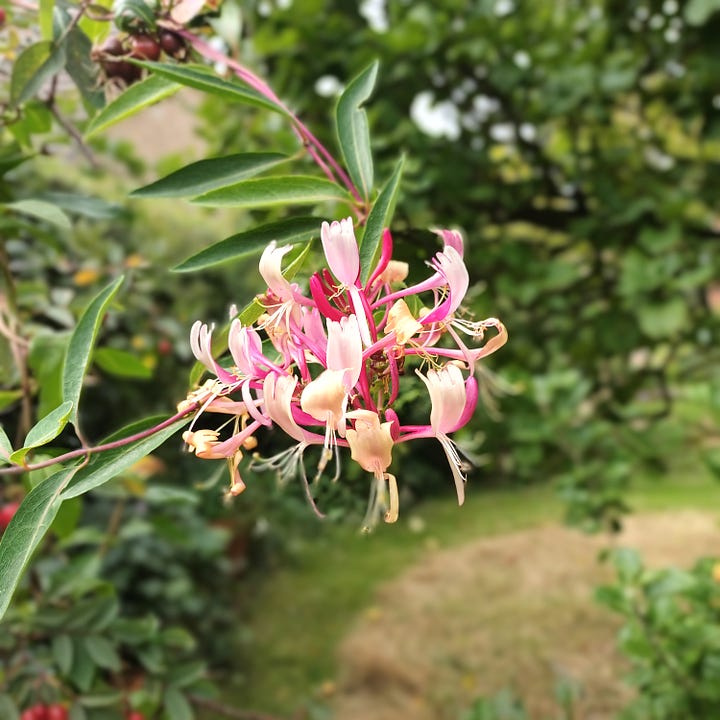
In terms of larger shrubs and small trees, a crabapple, rowan or hawthorn will support dozens of garden birds. Bluetits and goldfinches love to forage for caterpillars, while wrens and blackbirds go for spiders and larger birds - blackbirds, fieldfares, waxwings and mistle thrushes - will cloud the trees in winter to strip off their fruit. In the nursery, a huge flock of goldfinch haunt the alder trees in the ditch, pecking at the insects emerging from their bark, and settle over the bare-root beech. Clinging on to its bronze leaves through the winter, its a perfect nest site. All the little birds come to the feeders we have set up near the two big witch-hazel by the entrance to the shop, but the bluetits seem especially keen to peck about amongst the flowers, showing off the match with their feathers.
This is a perfect time to plant shrubs and trees for courting birds, before the deciduous trees come out of dormancy, and while birds are still looking around for nest sites. If red plastic hearts and overpriced supermarket flowers leave you cold, it might be a much nicer way to mark the day.




